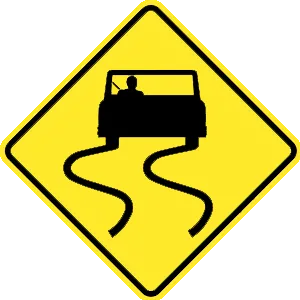FREE Minnesota DMV Practice Test #12 Page 4 of 5
The Minnesota DMV practise examinations have been updated for January 2025. It includes questions based on the Minnesota Driver Handbook's most essential traffic signals and laws for 2025. Use actual questions that are very similar (often identical!) to the DMV driving permit test and driver's licence exam to study for the DMV driving permit test and driver's licence exam.
On the practise exam, each question gets a tip and explanation to help you remember the concepts. The written component of the official Minnesota DMV test will include questions about traffic rules, traffic signs, and driving statutes, as well as knowledge from the Driver Handbook.
To obtain a passing grade, you must correctly answer 32 of the 40 questions. To help you prepare for your instruction permit or driver's licence, take our Minnesota DMV practise test.
The DMV exam is available in several languages.
Using any kind of testing assistance will result in an automatic fail, and the DMV may take additional action against your driver's licence, so stay away from it.
25 . When approaching a roundabout, you should always:
When approaching a roundabout, slow down. A roundabout is designed to be driven at a low speed. If there are no other vehicles or pedestrians already within the roundabout, you may not need to come to a complete stop before entering.
26 . Crossbuck signs indicate:
Crossbuck signs tell drivers to yield to trains at a railroad crossing. Drivers should not try to outdrive a train.
27 . You are driving on a busy street and your vehicle’s accelerator sticks open. You should:
If your vehicle’s accelerator sticks open, your vehicle will continue to maintain its speed or accelerate, even if you remove your foot from the gas pedal. Turn off the ignition, using care to move the ignition switch only far enough to stop the engine and not engage the steering wheel locking mechanism. Apply your brakes and move off the road to a safe area.
28 . When participating in a zipper merge near a construction zone, drivers should:
The driving procedure to follow when you see a “Lane closed ahead” sign is to stay in your initial lane up to the point of merge. You should then take turns with other drivers to safely and smoothly ease into the remaining lane.
29 . To help prevent crashes, you should:
Crashes often happen because one driver does something that other road users are not expecting. You should communicate with other motorists, bicyclists, and pedestrians by doing things like signaling when slowing down, stopping, or changing direction. Use your emergency signals or horn when appropriate.
30 . An approaching driver fails to dim their high beam headlights. Where should you look?
If an approaching driver fails to dim their high beams, glance toward the right side of the road. This will keep you from being blinded by the other vehicle’s headlights and will allow you to see enough of the road to stay on course until the other vehicle has passed.
31 . This road sign means:

This sign warns that pavement is slippery when wet. In wet conditions, you should reduce your speed, avoid braking or changing direction suddenly, and increase the distance between your vehicle and the one ahead.
32 . Drowsy drivers:
Drowsiness can make people drive so poorly that they appear to be drunk. Opening a window, turning on the radio, or drinking coffee is not enough to make a drowsy driver alert to roadway hazards.
Need Car Insurance? No problem!
Compare the best rates in Minnesota and find a personalized policy that meets your needs.
1. Are You Currently insured ?
2. Married ?
3. Do you own your Home?
4. Do you have more than 1 car ?
5. Have you or a Family Member Honorably Served in U.S. Military ?
6. Your Name
7. Age
8. Zip code
IMPORTANT REMINDER:Auto Insurance is Mandatory to drive in Minnesota. Get covered before you hit the road to avoid any fines.
Ranked by best match



